If you intend to take beautiful aerial photos on vacation but don't want to lug around a large drone, there are some amazing, pocket-sized drones available.
Pocket drones are small and lightweight enough to ensure portability, and they'll likely weigh under 250 grams, the threshold weight set by the FAA in the US and other authorities worldwide. Drones this light don't need to be registered in most countries—a hassle travelers can do without.
Here are some of the best pocket drones to bring on your next excursion.
Our Favorite Pocket Drones for Travel in 2023
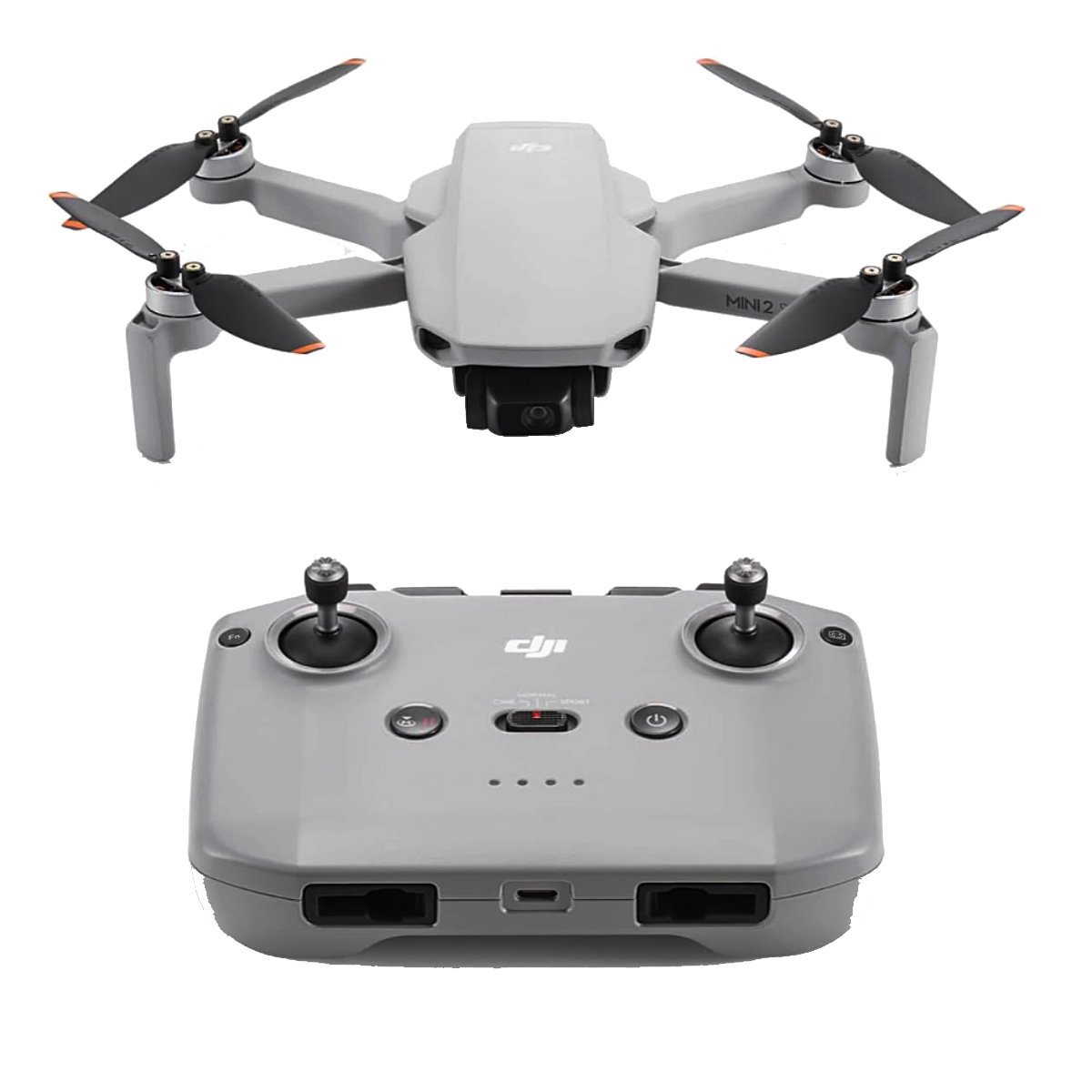
DJI Mini 2 SE
Premium Quality at a Surprising Price
DJI manufactures the best pocket drones. While the DJI Mini 2 SE doesn’t quite match the image quality that more premium DJIs offer, it does provide an excellent balance between affordability and quality. The 2.7K video and 12MP stills are good enough for most people, while it also beats the FAA weight threshold, folds down to pocket-sized dimensions, and has excellent battery life.
- 38kph (level 5) wind resistance
- Return to Home function
- 3-axis gimbal for steady footage
- Smooth 2.7K video
- Automated flight paths
- No obstacle avoidance
- Requires a microSD card
The DJI Mini 2 SE is an excellent choice for travelers seeking a first-class pocket drone. While it may not have the image quality of more premium drones, it’s still good enough for most, and it outperforms the competition in its price range. It's also easy to use and offers a good balance between cost and performance.
One of the most important things to consider when taking a drone on your travels is its weight. In many countries, including the US, there is a weight limit on camera drones, and your drone will need to be registered if it is over 249 grams. The DJI Mini 2 SE beats this weight requirement and will save you a ton of effort on paperwork.
The camera has an effective still resolution of 12MP and a wide-angle 24mm equivalent lens with an f/2.8 aperture. You can also capture silky-smooth video in 2.7K at 30fps, and for higher frame rates, you can shoot in Full HD at 60fps.
It folds down nicely to dimensions of 5.4 x 3.2 x 3.2 inches, and while flying is mostly manual, there are some in-app automated flight paths to help you capture stunning aerial footage. The drone has a 6.2-mile (10km) transmission range and a very good 31-minute flight time, which you can extend by opting for the Fly More Combo package, which includes an extra battery for double the flight time.
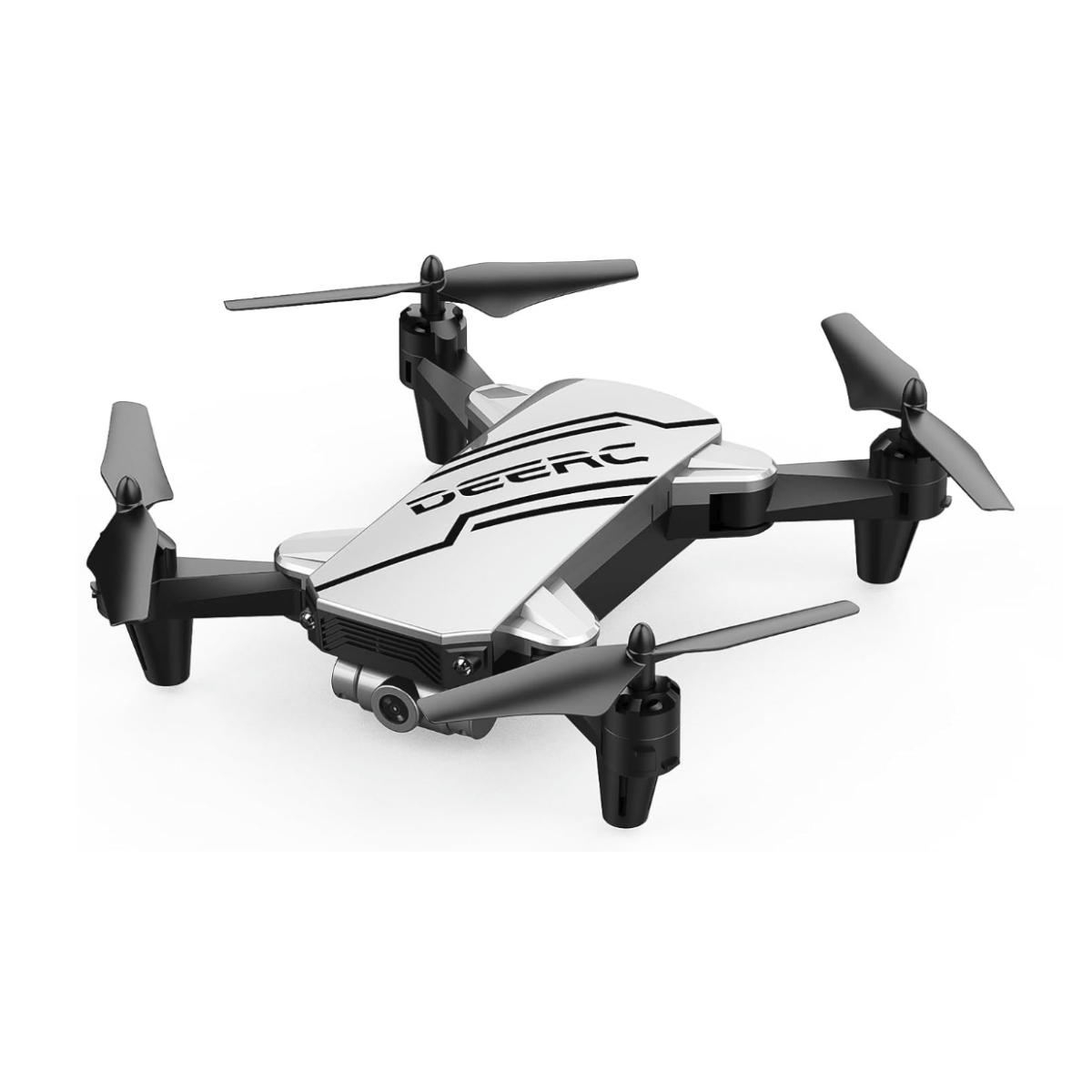
Deerc D20
An Excellent Pocket Drone for Youngsters Developing Piloting Skills
The Deerc D20 is the ideal mini drone for kids learning to fly. Whether on vacation or at home, the D20 offers the simplicity required for kids to develop their pilot skills. It also has a 720p camera for taking videos and selfies and has numerous safety and beginner-friendly features to ensure your child can learn the basics of drone piloting with confidence.
- Affordable
- 720p FPV camera
- Voice and gesture control
- Various safety and control features
- Fun straight out of the box
- Image quality won't win awards
- 40-meter transmission range
If you’re traveling with children, it’s understandable that you might not want to shell out hundreds of dollars on a pricey pocket drone. The Deerc D20 is perfect for kids learning new piloting skills, and its price is considerably less than what you might expect to pay. With dimensions of 7 x 4.7 x 1.7 inches and a weight of just 70 grams, it’s ideal for travel.
While you can’t expect the images you capture with this drone to make it into the pages of National Geographic, the 720p videos and stills you can take through the accompanying app on your smartphone are of good enough quality to keep most youngsters happy.
However, it’s more of a pocket drone for flying and an affordable choice for novice pilots. Children can enjoy beginner-friendly features like Altitude Hold for improved stability and precise hovering. You also get Headless Mode for simplified orientation, one-key take-off and landing, and easy-to-learn flips. For safety, there’s a low-power alarm, emergency stop, and four propeller guards should you use the drone indoors.
Kids can plot flights using waypoints on their smartphones or increase speed as their skills improve. You also get gesture and voice control for simple commands, taking selfies, and recording videos. However, flight time is limited to 10 minutes, but two batteries are included, so you can double that duration.
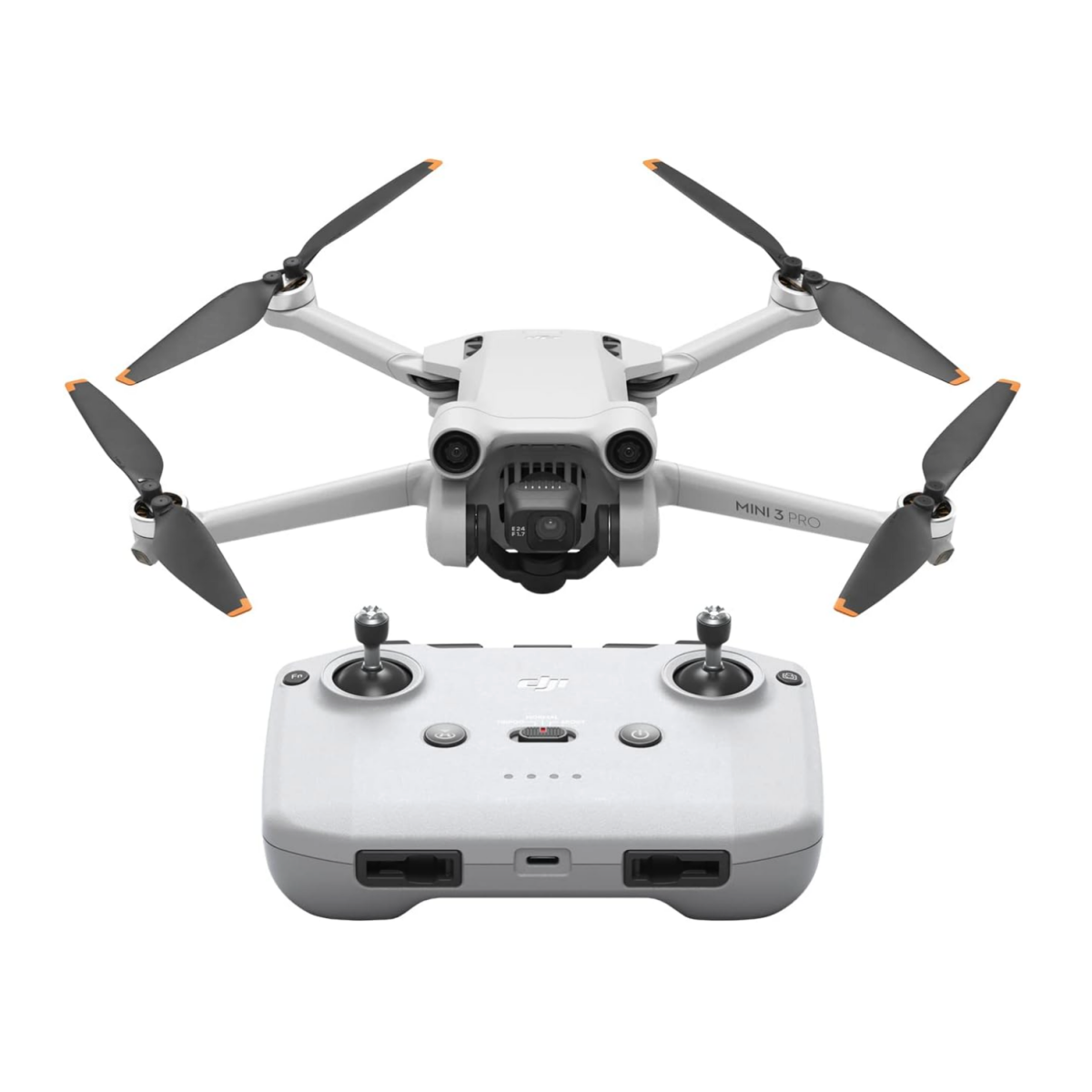
DJI Mini 3 Pro
A Compact Drone Delivering Outstanding Image Quality
For a luxurious pocket drone that delivers high-quality photos and video, the DJI Mini 3 Pro is a top choice. On top of its superior images, it weighs under 250 grams and has excellent features for newbies. You can also choose which type of remote control you get with it, potentially making it more affordable.
- 90-degree gimbal for vertical shooting
- Excellent low-light performance
- 34-minute battery life
- Intelligent flight modes
- Under 250 grams
- Needs a microSD card
The Mini 3 Pro is one of the best DJI pocket drones you can get. It beats the 250-gram threshold, has an outstanding camera, pleasing battery life, and features that will help beginners new to the world of drones.
In addition to its sub-250-gram weight, it also boasts compact dimensions for such a fantastic drone, measuring just 5.7 x 3.5 x 2.4 inches when folded down. It will easily slip into a large pocket, backpack, or small bag.
The drone boasts a superior 48MP camera that can shoot videos in 4K at up to 60fps. The f/1.7 aperture is wide, and the camera supports dual native ISO, ensuring that it performs well at any time of the day or night.
Beginner-friendly features include tri-directional obstacle sensing, which integrates with the Advanced Pilot Assistance System 4.0. This combo makes navigation of challenging environments, like forests, a breeze.
You can also choose the remote control. The package with the classic RC-N1 is available at a lower price than the one that includes the newer DJI RC. You use the former with a smartphone, while the latter has a built-in display. If you already have a DJI remote, you can purchase the Mini 3 Pro without one for even more savings.
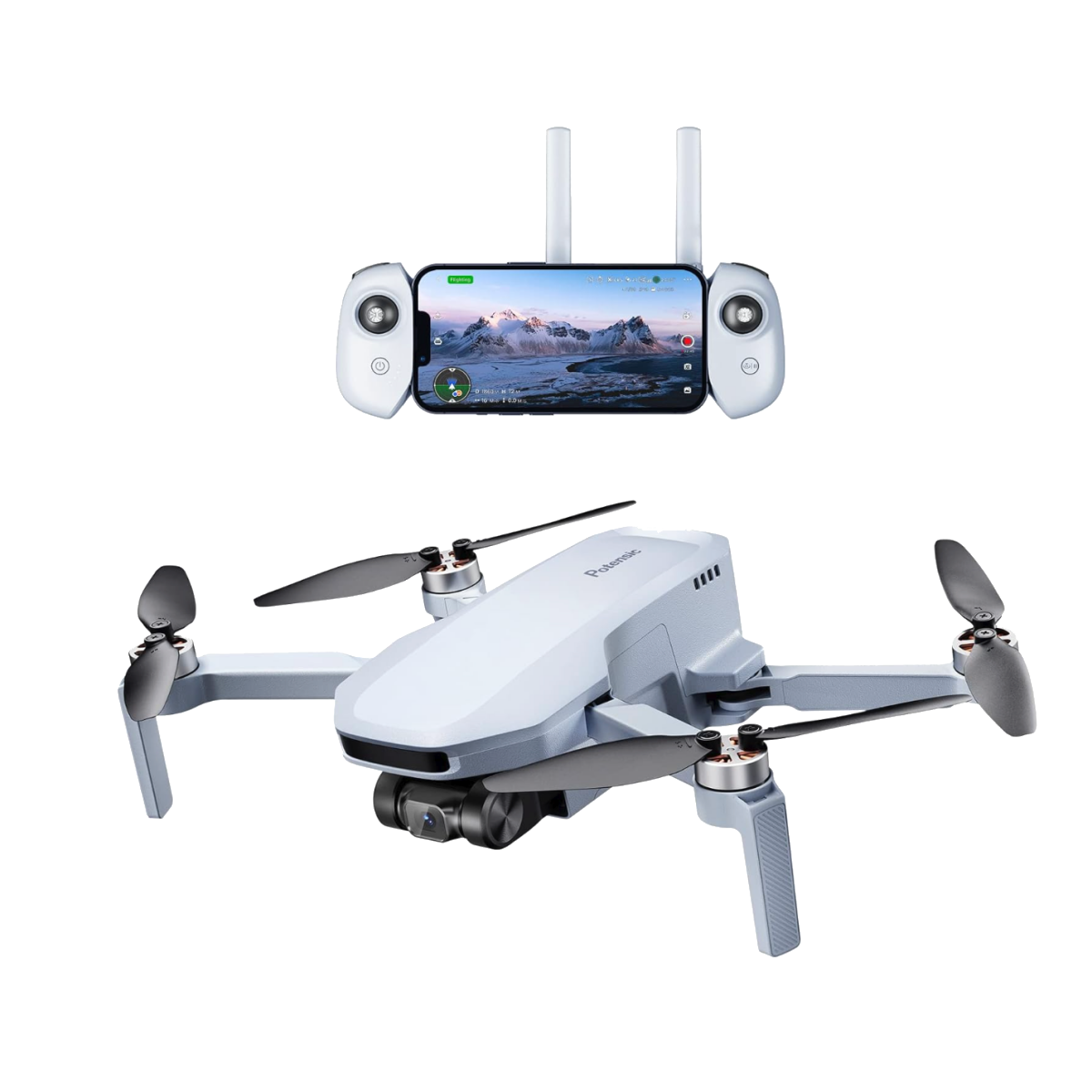
Potensic ATOM SE
An Easy-to-Fly Beginner Drone with Impressive EIS
With good quality electronic image stabilization and a level-5 wind resistance, the Potensic ATOM SE shoots good video, even on a reasonably gusty day. Photo quality is also good, while GPS accuracy is excellent. With PixSync technology, you can also enjoy a 4km transmission range. Its intuitive app, compact design, and weight under 250 grams make it an ideal pick for beginners seeking a pocket drone for travel.
- PixSync 2.0 for 4km transmission
- Easy-to-use PotensicPro app
- Level-5 wind resistance
- Video, Normal, and Sport flight modes
- 31-minute flight time
- No obstacle avoidance
There are now more beginner drones than ever, offering novices affordable learning bases. The ATOM SE from Potensic is right up there with the best entry-level drones you can buy. With dimensions of 3.5 x 5.6 x 2.3 and a weight of 245 grams, it’s another compact drone that beats the authoritative worldwide threshold of 250 grams. Additionally, the controller has a Nintendo Switch feel to it, with grips extending outwards to create room for smartphones of any size.
As it has no mechanical gimbal, you must rely on electronic image stabilization, which Potensic calls ShakeVanish, which is effective even in reasonably windy conditions. While horizons are, at times, unlevel, video is pretty steady, and it’s among the best EIS-reliant drones. You can shoot in 4K at 30fps. But if you want 60fps, you’ll have to settle on 1080p.
Photos are sharp for a drone in this price range, although low-light performance isn’t great, and the 12MP camera has minimal manual controls. However, the lens has a 118-degree FOV that can tilt from +20 to -90 degrees. GPS positioning is also accurate and ensures seamless operation of the Follow Me, Circle Flight, and Waypoint Flight features. However, it doesn’t have obstacle avoidance, so pilots must always maintain focus.
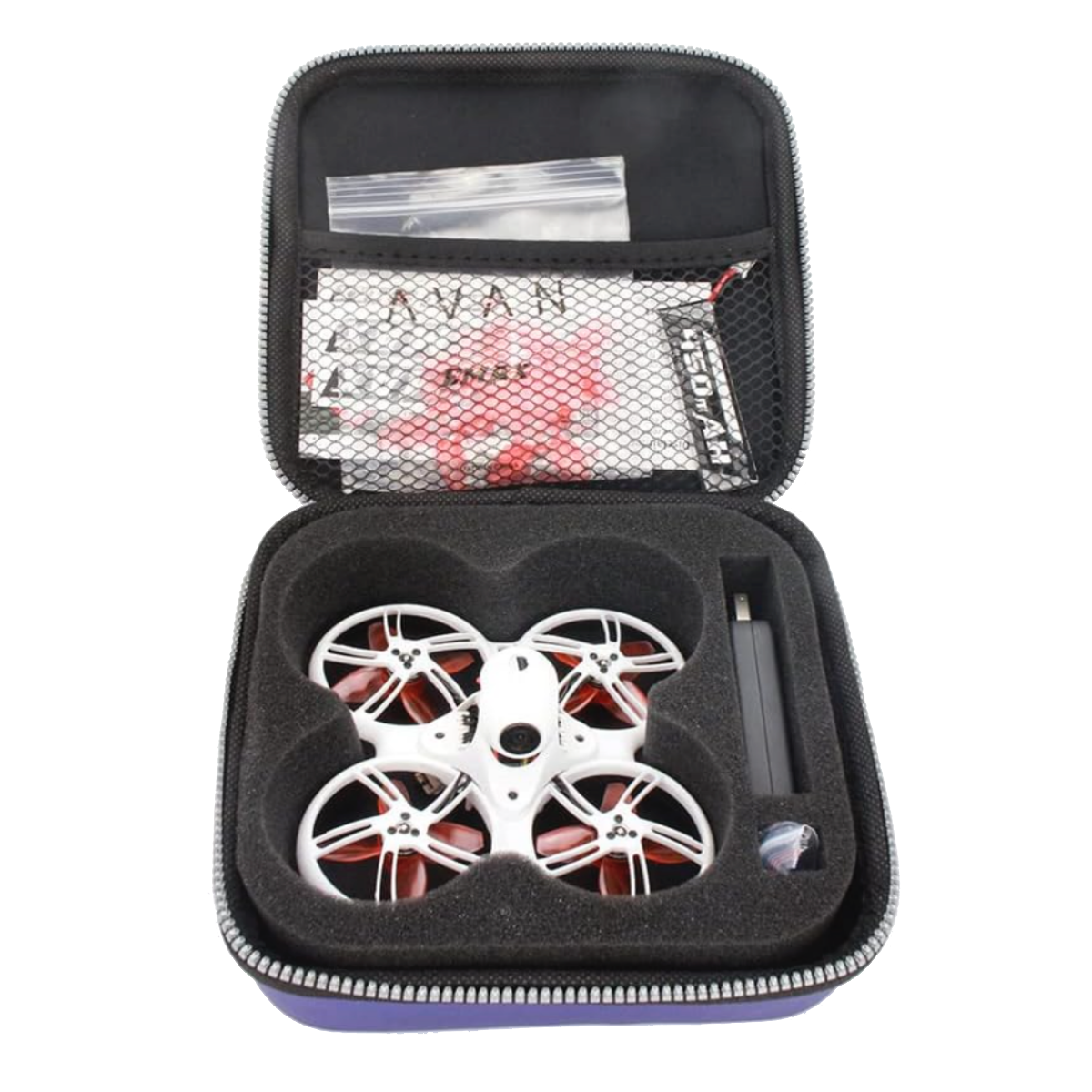
EMAX Tinyhawk 2
A Fun FPV Racing Drone Perfect for Family Vacations
For thrilling FPV racing with a mini drone, the EMAX Tinyhawk 2 has a powerful motor and bright LED lights that increase in illumination the faster it goes. It’s a fun racing drone for all levels and ages, and you can fly it indoors and out.
- Very durable
- Easy to fly
- Can reach a top speed of 50km/h
- Fun throttle-activated LED lights
- Sharp images in FPV goggles
- Not for windy-weather use
The Tinyhawk 2 from EMAX is primarily designed for FPV racing. While it’s marketed as an indoor racing drone, as long as the wind is still, it’s a definite inclusion for family vacations. You can race this excellent little quadcopter at the beach or in the park, and it’s an affordable entry-level device. Of course, you’ll need more than one to race the drone. However, it’s a great little toy for one-player freestyle flying, too.
The Tinyhawk 2 has a powerful 16000KV motor with a throttle-activated LED system that adds to the fun. With more throttle, you get more brightness, increasing the energy of your races. The lights make it especially fun to fly as the sun sets. And, with the RunCam Nano 2, you get crisp transmission back to your FPV goggles, capturing every thrilling moment of your high-speed races.
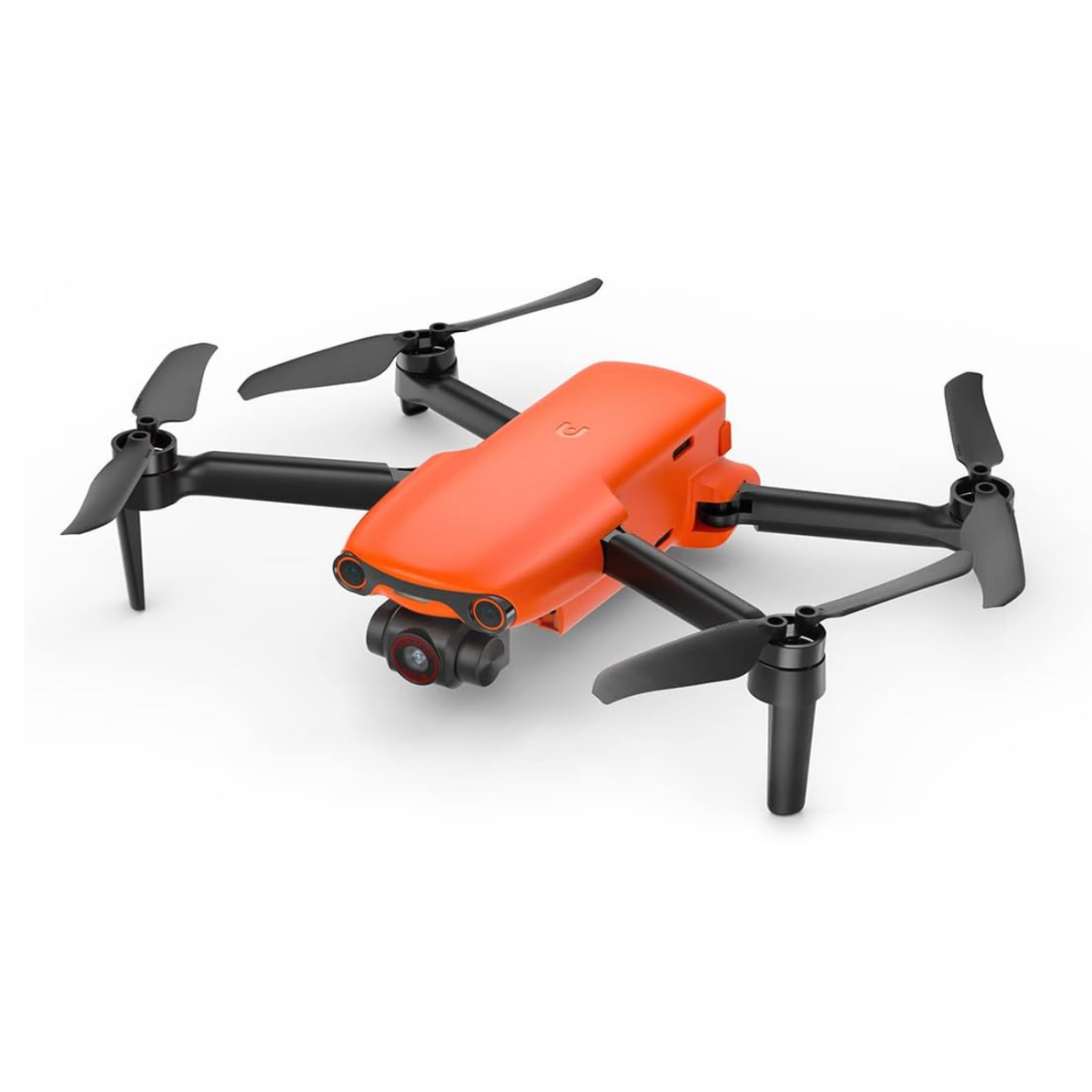
Autel Robotics EVO Nano+
A Quality Choice to Rival the DJI Monopoly
If you want to try something different from DJI, consider the Autel Robotics EVO Nano+. It’s a mini drone that can rival better DJI mini drones in terms of quality and is also a great choice for beginners with its tri-directional obstacle avoidance and easy-to-use controller.
- Choice of gray or orange
- Quality gimbal stabilization
- Good low-light performance
- 24mph wind resistance
- Three-way obstacle sensors
- No high frame rates over 1080p
- Not a very robust build
The EVO Nano+ from Autel Robotics offers a lot of similarities to DJI pocket drones. It’s lightweight, beats the 250-gram threshold, and folds down to pocket-sized dimensions of 5.6 x 3.7 x 2.2 inches.
While it doesn’t have the higher frame rate of 60fps when shooting 4K video, you can still capture Full HD at that level. The camera has a slightly higher resolution than the Mini 3 Pro at 50MP, and while not as fast as that drone's, the f/1.9 aperture teams up well with the 3-axis gimbal for admirable low-light photography.
The Autel Robotics EVO Nano+ features a three-way obstacle avoidance system, making it a good choice for beginners. The controller is user-friendly, too, and has a range of 6.2 miles (10km). With various automated shooting modes and a battery life of 28 minutes, you can get flying straight out of the box. However, if you require extended power, you can opt for a premium bundle with two batteries for double the fun.
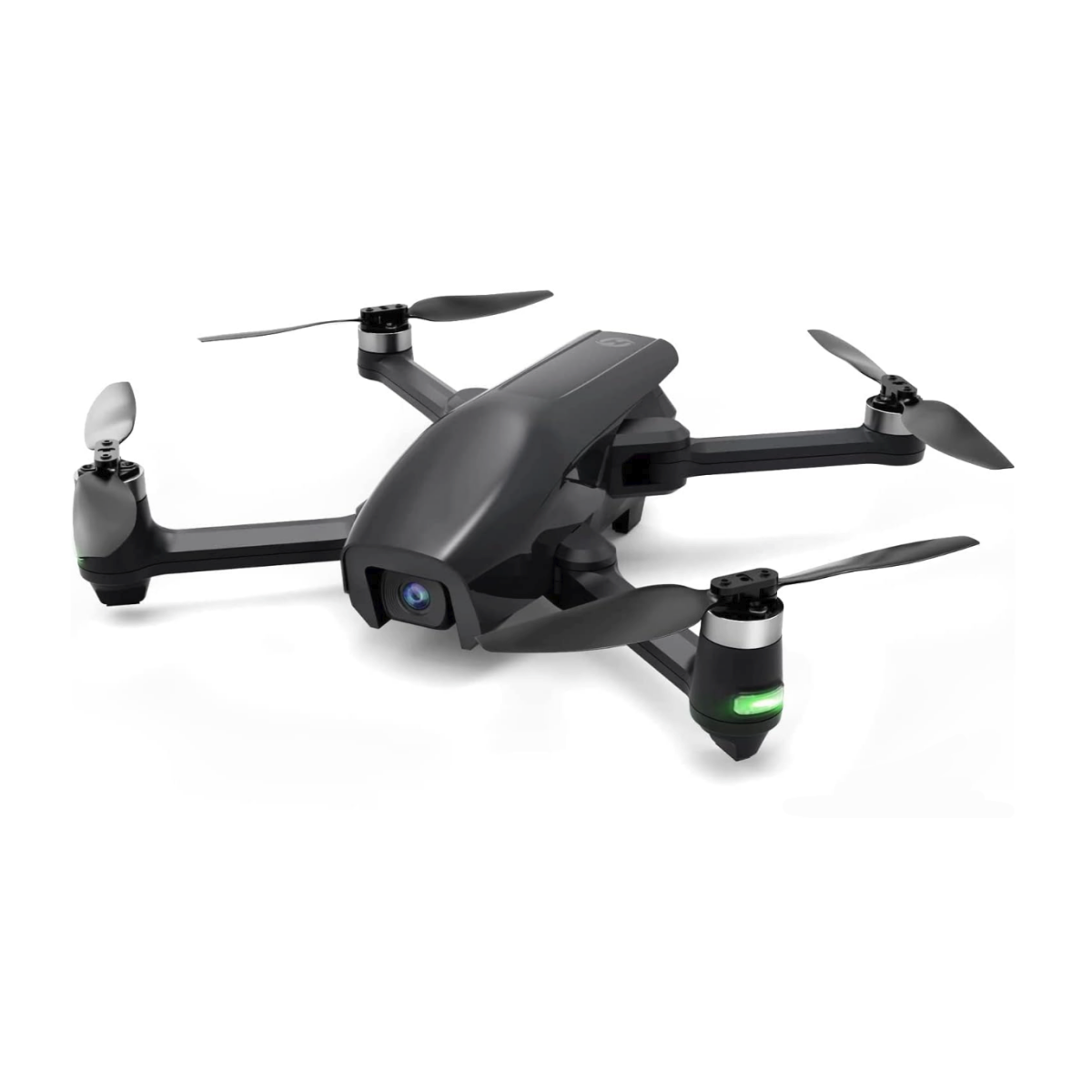
Holy Stone HS710
A More Affordable Alternative to DJIs for Novice Pilots
The Holy Stone HS710 is an affordable alternative to DJIs that will allow novice pilots to get some much-needed flying practice without worrying about damaging expensive hardware. While the images it takes are of decent quality, the drone’s primary use is to gain flying experience. It’s ideal for travel with its compact dimensions and sub-250-gram weight and comes with an intuitive app and some excellent beginner-friendly features you might not have expected.
- Easy-to-use app
- Affordable
- Lightweight and compact
- 46-minute battery life (between two batteries)
- Good flying modes and features for beginners
- Only compatible with 32GB memory cards
- Middling picture quality with no gimbal stabilization
If you feel the DJI’s pocket drones are a little pricey for a beginner, something cheaper might be the better choice. While you may not get the same image quality and reliable flying, you’ll save some bucks, get some experience, and have fun before moving on.
The Holy Stone HS710 offers a 4K camera with a 120-degree FOV. It doesn’t have a sophisticated gimbal setup, while stabilization is minimal, and colors are a little on the washed-out side. If you seek a 4K camera that takes the best possible images, this probably isn’t it.
However, it has a reliable 5G FPV transmission, and it folds down to a compact 5.8 x 3.6 x 2.1 inches with a weight of 245 grams—light enough to keep the FAA happy. It also includes many features you would find in more expensive drones. These include automated flight modes, waypoint marking, and a Follow Me function.
Flight time is pretty good, too, at 46 minutes spread over the two included batteries. Additionally, the app is intuitive for beginners. You can easily control the camera settings and other features from there, while the remote has an LCD relaying important information, such as battery life, altitude, and distance.
Choosing the Best Pocket Drone for You
Whether you want to take selfies, film exciting adventures, or get a bird’s-eye view of landscapes, you'll find that you don't need big drones. One that fits inside your pocket suffices for most situations. Not to mention that a pocket drone is way more convenient to travel with.
However, quality ranges from premium pocket drones equipped with quality cameras and gimbals for stabilization to more affordable options. If you are a photographer or videographer, you’ll be serious about image quality. The DJI Mini 3 Pro boasts a 48MP camera with a fast f/1.7 aperture and can shoot 4K video at up to 60fps. It also has features to assist newbie pilots, but if image quality is your bag, then the DJI Mini 3 Pro offers the best in pocket-sized dimensions.
If photos and video are not your primary concern, and you just want to practice your skills or buy a gift for a child, you can consider a budget-friendly machine, such as the Deerc D20. It has enough about it to allow you to practice both piloting and photography. This is especially true for kids. But, if you want to step the quality up a bit while still remaining in budget territory, you can opt for the Potensic ATOM SE.
However, as DJI is the master of drone technology, we recommend you stick with them. While the Mini 3 Pro is relatively pricey, the DJI Mini 2 SE strikes a balance between image quality and affordability. It’s lightweight and compact for travel while also delivering very pleasing photos and videos.

DJI Mini 2 SE
Premium Quality at a Surprising Price
DJI manufactures the best pocket drones. While the DJI Mini 2 SE doesn’t quite match the image quality that more premium DJIs offer, it does provide an excellent balance between affordability and quality. The 2.7K video and 12MP stills are good enough for most people, while it also beats the FAA weight threshold, folds down to pocket-sized dimensions, and has excellent battery life.
- 38kph (level 5) wind resistance
- Return to Home function
- 3-axis gimbal for steady footage
- Smooth 2.7K video
- Automated flight paths
- No obstacle avoidance
- Requires a microSD card
